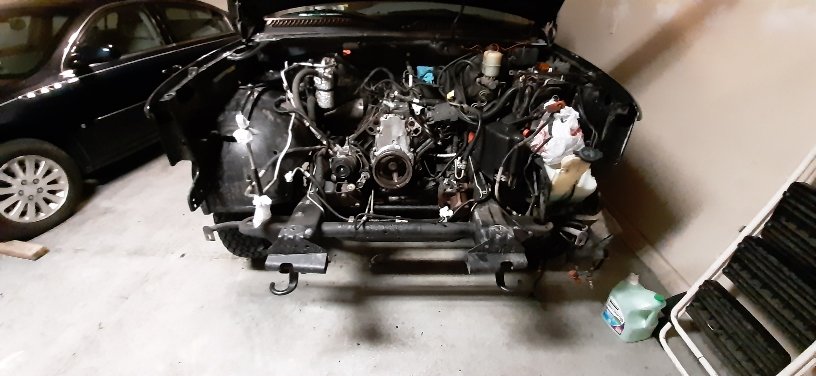I ran into a minor hurdle. I'm tearing down and inspecting the used connecting rods I bought. I found a flat surface, the granite in my kitchen. It's flat to within 0.003". I put the connecting rods on it.
Are rods flat enough? Trying to make sure they aren't bent...
One side has no play at all as I push down on the various corners of the rod. The other side has enough play to notice when pushing on the rod. It appears to be less than 0.003" off. Not sure if that is spec or not? It appears that way on two rods I tested. It is also on the same surface of the two rods.
All this aside, when I look closer and feel with my finger, there's some "boogers" on those sides. I attemted cleaning those with B12 chemtool, starter fluid, and even gumout. None had any effect. I almost wonder if is a slight bit of rust. The guy I bought the rods from didn't have them exactly protected / stored well. I've been cleaning everything up, then putting a light coat of WD40 and placing them in ziploc bags.
Maybe it's a none issue, especially if is side that is next to crank as I don't think there's as much contact surface there no? Either way I watched some machine shop videos and they polish with down to 320 grit sandpaper. My thought was to get a piece of scrap granite from work, test to make sure it's flat. Then attach a piece of 400 or higher grit sandpaper to it. Then gently pass the rod over that surface to polish out the bogger.
Changing connecting rod bolts?
I read that the connecting rod bolts can be reused 3 times. This is designed as such so you can check bearing clearances with plasti gauge. I have no clue how many time these bolts have been used. My guess is they've been used once as bearings still have GM markings on them (original bearings). Either way, I think I'd rest better changing them. However, I cannot figure out how to get them out of the cap. They appear pressed in with some sort of sleeve. There must be a way as they sell the bolts.

